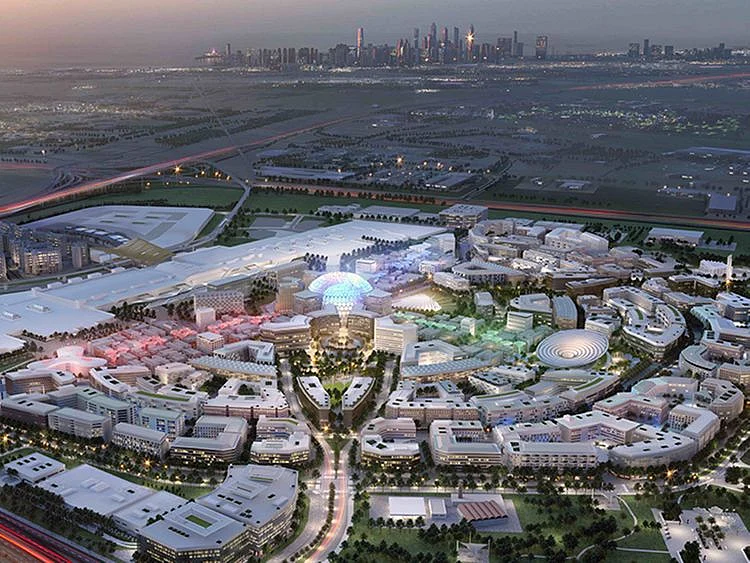Dubai starts complex process to create District 2020 out of the Expo site
Dismantling of all non-legacy structures at Expo site will be done in 3-6 months

Dubai: Dubai is getting ready to welcome District 2020, a ‘smart city’ that will take shape in and around the Expo venue – and in no time emerge as the next big thing when it comes to choosing an office, a home, or a retail space.
For now, however, the attention will be on repurposing the entire Expo site, starting with the dismantling of all non-legacy structures. That transition will be happening immediately, which is where companies like LC&Partners come in.
“The dismantling (or re-purposing) works will need to be accurately designed and planned, as they can be as complex as the original construction,” said Lorenzo Candelpergher, Group Chairman and CEO of the project management firm. “The very first fundamental step is the compilation of a detailed assets inventory that needs to be moved out of the pavilions as a result of the dismantling works.
“For each of this item, the original source, as well as its final destination, must be defined together with the indicative date for their removal from the site and the related logistic requirements. The assets inventory is basically the inputs for the comprehensive decommissioning plan to be approved by EXPO, before any works are allowed to start within the pavilion.”
Quite a complex process
Multiple contractors and project management teams will get busy on the site for the tearing down works, which could take between three to six months, depending on the ‘size and complexity’ of these buildings.
Interestingly, the dismantling works are not managed by areas at the site but, “as happened for the construction, are managed separately and mostly independently for each Pavilion, as each participant country (or corporate entity) contracted the dismantling team independently from those hired for other pavilions,” said Candelpergher.
That’s broadly in line with earlier announcements made by the operators of District 2020, who are looking at the first tenants making a move into the offices from October. Leading names that have signed up include DP World and Siemens. District 2020 is repositioning itself as a full-scale innovation hub, with the latest in available technology and 5G-enabled services powering the systems.
Some of the legacy buildings obviously remain, such as the UAE Pavilion and the Mobility and Sustainability structures. Also remaining in place are a few other national pavilions.
This time is different
“Complete dismantling works are not very common in the construction industry, especially in the Middle East, where most projects are greenfield, i.e., new constructions built on an empty plot,” said Candelpergher. “Dismantling works, however, are very common in the context of international exhibitions – Expos, for instance - where most of the pavilions are specifically designed and built to last only for the duration of the event. They are meant to be dismantled and disposed of, or rebuilt somewhere else. They could also be retrofitted to serve new purposes.”
During the six-month Expo run, there were more than 200 pavilions. “Some select pavilions will be eventually repurposed, such as the ones of Germany, India, Saudi Arabia, and DP World,” the CEO said. “According to the latest updates, at least 10 to 12 of the total pavilions are meant to stay, but we anticipate the number in the end may be significantly higher.
“The whole site's superb infrastructure - roads, parking, utilities - will also remain, along with the iconic Al Wasl Plaza with the adjoining 10-storey ‘hospitality buildings’, including the Rove Hotel, the Observation Tower, the water feature located in the central section of Expo, as well as all the facilities within Al Forsan and Jubilee parks, the Dubai Exhibition Center, the Metro station and more.”
Mind it - Don't dump
All materials from the Expo site will have to be disposed in a sustainable way, ensuring the separation of different recyclable components and minimising the disposal to waste dumps. "Many elements of the construction, especially MEP components, may be re-utilized in other construction projects, as the equipment has been operational for just a few months and has a life expectancy of several years," said Lorenzo Candelpergher of LC&Partners. "Handling of large and often heavy structural elements will require special care as these are activities that entail potentially higher risks in terms of safety and certainly come with some logistic challenges."
Network Links
GN StoreDownload our app
© Al Nisr Publishing LLC 2025. All rights reserved.